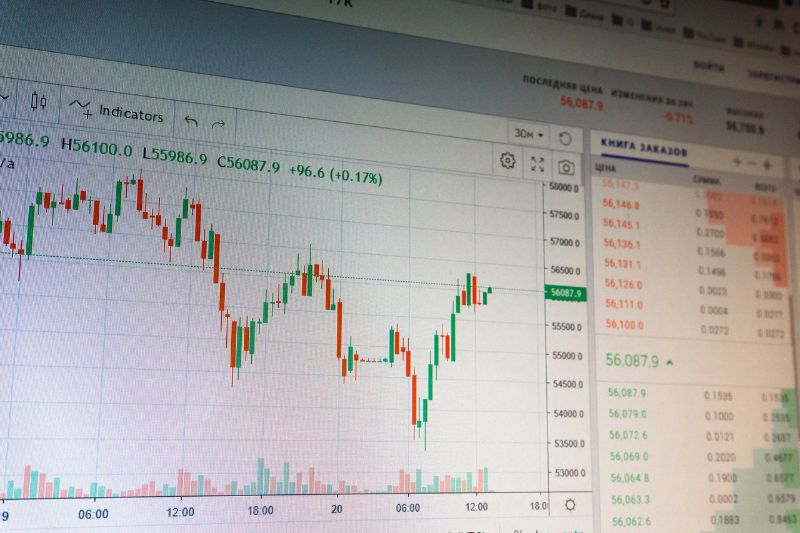Returning to the initial question of how much money is required to retire on dividends, To answer that question, you must first determine what level of money you are willing to live on.
Most people can live practically anyplace in the world with a budget of $40,000 to $50,000.
I enjoy dividend investing because it allows me to plan for my future by analyzing my cash flow vs. my debt rather than trying to time the sale of my assets in an ideal environment.
So your yearly desired income divided by a dividend yield that you are comfortable investing in gives you the final answer to how much money you need to invest to live off dividends. Using the usual dividend yield of 4%, most persons would need to invest $1 million in dividend stocks to be able to live off the passive income.
How much money do you have to invest to live off dividends?
Jack is a single individual who spends $48,000 per year to support himself in a high-cost-of-living area of California. He has a high risk tolerance and feels comfortable building a retirement portfolio that is significantly weighted toward equities rather than bonds and includes a lot of REITs with high dividend yields.
He anticipates a dividend yield of 6% per year from his retirement account. To live off dividends, he’ll need to invest roughly $800,000, based on $48,000 split by a 6% yield.
How much do I need to invest to make $1000 a month in dividends?
To earn $1000 in dividends per month, you’ll need to invest between $342,857 and $480,000, with a typical portfolio of $400,000. The exact amount of money you’ll need to invest to get a $1000 monthly dividend income is determined by the stocks’ dividend yield.
It’s your return on investment in terms of the dividends you get for your investment. Divide the annual dividend paid per share by the current share price to get the dividend yield. You get Y percent of your money back in dividends for the money you put in.
Before you start looking for greater yields to speed up the process, keep in mind that the typical advice for “normal” equities is yields of 2.5 percent to 3.5 percent.
Of course, this baseline was set before the global scenario in 2020, so the range may shift as the markets continue to fluctuate. It also assumes that you’re prepared to begin investing in the market while it’s volatile.
Let’s keep things simple in this example by aiming for a 3% dividend yield and focusing on quarterly stock payments.
Most dividend-paying equities do so four times a year. You’ll need at least three different stocks to span the entire year.
If each payment is $1,000, you’ll need to buy enough shares in each company to earn $4,000 every year.
Divide $4,000 by 3% to get an estimate of how much you’ll need to invest per stock, which equals $133,333. Then multiply that by three to get a portfolio worth about $400,000. It’s not a little sum, especially if you’re starting from the ground up.
Before you start looking for higher dividend yield stocks as a shortcut…
You may believe that by hunting for greater dividend yield stocks, you can speed up the process and lower your investment. That may be true in theory, but equities with dividend yields of more than 3.5 percent are often thought to be riskier.
Higher dividend rates, under “normal” marketing conditions, indicate that the company may have a problem. The dividend yield is increased by lowering the share price.
Look at the stock discussion on a site like SeekingAlpha to see whether the dividend is in danger of being slashed. While everyone has an opinion, be sure you’re a knowledgeable investor before deciding to accept the risk.
When the dividend is reduced, the stock price usually drops even more. As a result, both dividend income and portfolio value are lost. That’s not to suggest it happens every time, so it’s up to you to decide how much danger you’re willing to take.
How do I make $500 a month in dividends?
Here’s a five-step approach to get you started on your path to building a monthly dividend portfolio. This will take some time to create unless you have a huge sum of money ready to invest. That’s OK.
Open a brokerage account for your dividend portfolio, if you don’t have one already
The initial step will be to open a brokerage account if you don’t already have one. Examine the brokerage company’s trading commission fees and minimum standards. Many prominent brokerage firms have decreased their trade commissions to zero in 2019.
The move to zero commissions per trade is beneficial to you because it allows you to expand your dividend portfolio with smaller purchases without incurring expenses.
Also, double-check any minimum account balances, as some companies impose a fee for having an account if the balance falls below a particular amount. Many organizations have dropped their balance minimums to $0, like they did in 2019, but always double-check.
You’ll need to determine whether you want to open a conventional brokerage account or a tax-deferred retirement account when you open your account and begin your approach. Consider speaking with your preferred tax professional to figure out what makes the most sense for your unique scenario.
Finally, make sure you understand how to make a direct deposit into your new account as well as how to make a transfer from your current checking account. Consistently adding to an investing portfolio of any size is crucial to its success. By removing a step from the process, automation makes it easier to achieve your objectives. Also, if your employer does not offer direct deposit, you can transfer funds from your bank account.
If you have money set aside to add to your portfolio, begin transferring it to your new account as soon as it is available. Then look at your budget to see how much you can put aside each month.
Determine how much you can save and invest each month
To earn $500 in dividends every month, you’ll need to invest about $200,000 in dividend equities. The exact amount will be determined by the dividend yields of the equities in your portfolio.
Examine your finances more closely and determine how much money you can set aside each month to expand your portfolio. Given the large sum of money you’ll need to reach your $500 monthly dividend objective, adding to your portfolio on a regular basis will help.
The amount of money you have available to invest each month will influence how long it takes you to attain your objective.
Set away what you can if your budget is currently tight. Begin with a tiny quantity so that you have something to work with.
Then, take a closer look at your budget to see if there are any areas where you can cut costs so you can put that money to better use.
Set a smaller, short-term dividend objective so you can see how far you’ve come toward your larger goal. Perhaps a target of $50 or $100 per month in dividends is something you can achieve this year. It’s a good starting point for constructing a larger monthly dividend portfolio in the future.
Set up direct deposit to your dividend portfolio account
To amend your paycheck instructions, get the direct deposit details for your brokerage account. Because you still need money in your regular checking account, your employer should allow you to split your income in several ways. Make sure you pay your expenses as well as invest in your future earnings!
You should be able to set up free account transfer instructions within your brokerage account if you’ve run out of paycheck instructions or your brokerage business doesn’t have clear direct deposit instructions. Make a note on your calendar to manually transfer the money you intend to invest each payday. If the first option isn’t available, there’s usually a backup plan in place.
Choose stocks that fit your dividend strategy
Stock picking is a very personal decision that necessitates extensive research about each firm in which you choose to invest. When putting together a dividend portfolio, there are a few considerations to keep in mind for each company:
- How long they’ve been paying a dividend and how often they’ve increased it.
The financial condition and earnings of the company can help you determine how safe future dividend payments will be. When deciding which stocks to buy, it’s crucial to do some research on the firm and read some feedback.
The company’s dividend history and payment rise trends can help you predict when it will pay out in the future. Stocks with rising dividends might also help you reach your dividend targets.
Finally, understanding the industries in which the companies you choose to invest are located allows you to build a well-balanced and diverse portfolio. Risk management entails avoiding putting all of your eggs in one basket. Diversifying your portfolio’s companies and industries helps spread the risk of future dividend earnings.
Another factor to consider is when the corporation pays its dividends. If you wish to earn dividends on a monthly basis, seek for companies that have set payout schedules. That isn’t to argue that a historical payout schedule should be used to determine whether you should purchase or sell a stock. It simply adds to the complexity of your decision-making process.
Create a watchlist of companies you think you’ll like to invest in so that when you have the funds, you can begin purchasing shares to increase your dividend income.
Buy shares of dividend stocks
Finally, start buying shares of stock in the firms you wish to focus on to meet your monthly dividend objective. When it’s time to make a purchase, you’ll have cash on hand thanks to direct deposit from each paycheck.
When buying stocks, double-check your watchlist to discover which stock is currently the best deal. It’s not so much about “timing the market,” which rarely works out in your favor, as it is about making sure your purchases are as efficient as possible.
Fortunately, most large brokerage firms have decreased their trade commissions to zero, allowing you to buy stock in smaller quantities without incurring fees that reduce the value of your investment.
You can avoid research overwhelm and decision weariness by checking your watchlist. Whether you’re buying bluechip stocks, you’ll want to check the calendar to see if you’ll be eligible for the next dividend payment, or if the price is low enough, you could be able to get more shares for your money.
How much should I invest to make 2000 a month?
Dividends of $2000 a month require an investment of $685,714 to $960,000, with an average portfolio of $800,000. The exact amount of money you’ll need to invest to get a $2000 monthly dividend income is determined by the stocks’ dividend yield.
Dividend yield is the return on investment in terms of dividends for the equities you buy. Divide the annual dividend paid per share by the current share price to get the dividend yield. For the money you put in, you get back X percent in dividends.
You could believe that stockpiling your portfolio with greater dividend yielding stocks is a quick way to achieve your aim. Dividend yields of 2.5 percent to 3.5 percent are the standard recommendations for “normal” dividend equities.
The benchmark range was established based on the stock market previous to 2020, which has proven to be an unexpected year. So, instead of just looking at the present price, you might want to look at the dividend yield at the average price and 52-week high to see how the company truly stacks up.
To keep things simple, we’ll base everything on a 3% dividend yield and concentrate on quarterly stock payments.
The majority of dividend stocks pay out dividends four times per year. You’ll need at least three different stocks to cover each month of the year.
If each payment is $2000, you’ll need to buy enough shares in each firm to earn $8,000 every year.
Divide $8,000 by 3% to get an estimate of how much you’ll need to invest per stock, which is $266,667 in holding value. Then increase that by three to get an approximate portfolio value of $800,000. It’s not a little sum, especially if you’re starting from the ground up.
And at that overall value, you’ll probably want to spread your risk by investing in various stocks. Investing in the stock market entails a certain amount of risk.
And before you try to shortcut the process by finding higher dividend yield stocks…
Hold on for a moment if you go back to the math above and realize you may minimize your investment by buying equities with higher dividend yields.
This may theoretically work, but dividend equities with yields greater than 3.5 percent are often seen as dangerous.
Higher dividend yields in “ordinary stocks” may indicate a problem with the company under “normal” marketing conditions. There is concern that the company’s stock price will plummet. The dividend yield is increased by the decreased share price.
Spend some time on a site like SeekingAlpha reading the comments. While everyone has an opinion, you can gain some insight into the company’s current state and the overall consensus on the dividend’s security. Is there a general consensus that the dividend will be cut?
The stock price will almost certainly fall further if the corporation reduces its dividend. You’ll lose your dividend income as well as the value of your portfolio.
It’s impossible to know for sure what will happen, and all you can do is speculate based on publicly available facts. It’s up to you to decide how much risk you’re willing to take. Before you decide to take the risk, make sure you’re an informed investor, just like you would with any other investment.
Is it realistic to live off dividends?
The most important thing to most investors is a secure retirement. Many people’s assets are put into accounts that are only for that reason. Living off your money once you retire, on the other hand, might be just as difficult as investing for a decent retirement.
The majority of withdrawal strategies require a combination of bond interest income and stock sales to satisfy the remaining balance. This is why the renowned four-percent rule in personal finance persists. The four-percent rule aims to provide a continuous inflow of income to retirees while also maintaining a sufficient account balance to continue for many years. What if there was a method to extract 4% or more out of your portfolio each year without selling shares and lowering your principal?
Investing in dividend-paying equities, mutual funds, and exchange-traded funds is one strategy to boost your retirement income (ETFs). Dividend payments produce cash flow that might complement your Social Security and pension income over time. It may even give all of the funds necessary to sustain your pre-retirement lifestyle. If you plan ahead, it is feasible to survive off dividends.
How can I earn $3000 a month in dividends?
Here’s a five-step approach to get you started on your path to building a monthly dividend portfolio. Unless you have a big sum of money set aside to invest, you may need to spread your plan out across several years. You’ll get there with patience, perseverance, and consistency.
The initial step will be to open a brokerage account if you don’t already have one. Even if you currently have a brokerage account, you might wish to open one just for this portfolio.
You’ll need to decide if you want to open a taxable account to utilize the dividend income before retiring, or whether you want to open a separate tax-deferred account to save money for the future. Consider speaking with your preferred tax professional to figure out what makes the most sense for your unique scenario.
To avoid fees, double-check if there are any trading commission fees or minimum account balances while looking at brokerage firms. The majority of prominent brokerage firms decreased their trade commissions to zero in 2019. This is beneficial to you because you can expand your dividend portfolio with fewer purchases and avoid incurring fees.
Finally, confirm how to direct deposit money into your new account as well as how to set up a transfer from your regular checking account before opening an account.
Building an investment portfolio of any size, and especially when your aim is to make $3000 each month, requires consistency. By removing a step from the process, automation makes it easier to achieve your objectives.
If your employer does not offer direct deposit, you can transfer funds from your bank account. Make a recurring reminder for payday on your calendar so that you may transfer the funds as soon as they become available.
Begin transferring money to your new account as soon as it is open with the money you have available to start your portfolio. Then, look at your budget to see how much you can put down each month.
To earn $3000 in dividends every month, you’ll need to invest about $1,200,000 in dividend equities. The exact amount will be determined by the dividend yields of the equities in your portfolio.
Examine your finances more closely and determine how much money you can set aside each month to expand your portfolio. Given the large sum of money you’ll need to reach your $## per month dividend objective, adding to your portfolio on a regular basis will help.
And you’ll almost certainly need to work on this objective year after year, aiming for a yearly rise in your monthly dividend income. Consider setting an annual dividend income target of increasing your monthly dividend income by $50 or $100 per month. It’s an excellent stepping stone that enables you to progress without being disheartened.
Tip: If you set an annual goal of growing your monthly dividend income by $50 or $100 each month, it may seem like it will take you a lifetime to achieve. Another thing to consider is that when each stock compounds annually with extra reinvestment in addition to fresh investment, the dividend snowball will begin to accelerate. You can also consider selling a stock that has outperformed in terms of price appreciation but has underperformed in terms of dividend yield. You’ll alter your portfolio as you go.
You should be able to set up free account transfers to your brokerage account if you’ve run out of paycheck instructions or if your brokerage business doesn’t offer clear direct deposit instructions. Make a note on your calendar to manually transfer the money you intend to invest each payday. If the first option isn’t available, there’s usually a backup plan in place.
The company’s dividend payment schedule is another factor to consider. If you wish to earn dividends on a monthly basis, seek for companies that have set payout schedules. That isn’t to argue that a historical payout schedule should be used to determine whether you should purchase or sell a stock. It simply adds to the complexity of your decision-making process.
This procedure will be repeated till you accomplish your target. You’ll be one step closer to earning $3000 a month in dividends with each purchase.
How can I get $100 a month on dividends?
We’ll go through each of these steps for dividend investing in a moment. But first, I’d like to share a recent reader comment. In the hopes that it will motivate you to discover how to make money from dividends.
Create a Lead Gen Website for Service Businesses
This approach entails collaborating with another company that provides a service or a high-end product to its clients. You’d make your own website, which would essentially be an advertisement for your partner’s company. Your website offers free resources to potential customers, as well as the option to schedule a free consultation call. You’d then drive visitors to that website in order to generate leads for the company with which you’re affiliated. The company would then compensate you for the leads.
You’ll need a working knowledge of Digital Marketing to know how to drive the correct traffic to the website in order to achieve this successfully.
Join the Amazon Affiliate Program
Joining Amazon’s affiliate program will allow you to share in their revenues. You can share your affiliate links with anyone you think would be interested in purchasing various products after completing the simple sign up process. A commission of 4-8 percent of the sale price is subsequently paid to you. The bigger the affiliate commission, the more things your prospects purchase on Amazon.
One of my favorite aspects of Amazon’s affiliate program is that even if someone clicks on your link but does not purchase what you recommend, you can still receive an affiliate commission if they buy something from Amazon within the next 24 hours. Keep in mind that in order to earn $1,000 from affiliate marketing, you must perform an outstanding job promoting things to individuals who want to buy them.
Market a Niche Affiliate Opportunity
Instead of earning a tiny fee on a large number of products with Amazon affiliates, you may focus on marketing one premium product – usually a digital product. You can create a YouTube channel or blog dedicated to that product or topic, start an email list, or advertise it on social media.
How do I make 5k a month in dividends?
Building an investing portfolio of any magnitude, and especially when your objective is $5000 each month, requires consistency. By removing a step from the process, automation makes it easier to achieve your objectives.
To earn $5000 in dividends every month, you’ll need to invest about $2,000,000 in dividend equities. The exact amount will be determined by the dividend yields of the equities in your portfolio.
Examine your finances more closely and determine how much money you can set aside each month to expand your portfolio. Given the large sum of money you’ll need to accomplish your $5000 monthly dividend objective, adding to your portfolio on a regular basis can help.
This procedure will be repeated till you accomplish your target. You’ll be one step closer to earning $5000 a month in dividends with each purchase.
Can You Get Rich with dividends?
Dividend Growth Investor contributed this article as a guest contributor, with Ben Reynolds editing and adding to it.
“Yes,” is the quick answer.
With a high savings rate, strong investment returns, and a long enough time horizon, this will result in unexpected wealth over time.
For many new investors, this may appear to be an impossible pipe dream. After all, the S&amp This doesn’t appear to be a high enough rate to make someone wealthy…
Regardless, dividend growth investing is still one of the most simple and consistent strategies to get rich. This post will show you how to get rich from dividends by focusing on four key investing ‘levers’ that you have control over.
The Goal Of Investing
The ultimate aspirations of most individuals reading this, aside from ‘riches,’ are to retire affluent and stay retired. Financial independence gives you more flexibility, freedom, and options in life. The most difficult part is generally getting there.
At the Dividend Crossover Point, Dividend Growth Investors acquire financial independence. When my my income exceeds my expenses, I’ve reached the dividend crossing point. While I am extremely close to this position right now, I also want to leave some room for error in case I am confronted with a future setback.
In the process of pondering how to achieve financial independence, I’ve spoken with a number of people who are also striving for it. I’ve compiled a list of a few tools that these individuals have utilized to become wealthy. These are tools that they have control over. While there are no guarantees in the uncertain realm of long-term investing, making the most of the things you can control increases your chances of success.
These levers are intuitive and operate at a high level, yet I have discovered that they are critical. Even if you are a better stock picker than Warren Buffett, if you disregard those levers, you are unlikely to achieve your objectives.
Lever #1: Your Savings Rate
Savings is the most critical factor for anyone seeking financial independence. You will never be able to invest your way to financial freedom if you do not save money. In most cases, you have more influence over your savings rate than you do on the earnings you will make as an investor.
If you earn $50,000 per year and save 20% of your income, you can save $10,000 in a year. Your annual spending is $40,000 in this scenario. The $10,000 you set aside will cover your costs for three months.
You can save $25,000 in a year if you find a way to minimize your spending and save 50% of your income.
The objective is to focus on savings percentages rather than actual money. The argument is that you have more control over how much you save, and saving has a better predictability of success when it comes to generating wealth than investing returns. Regrettably, future returns are difficult to anticipate. Dividends are the more predictable component of future returns, which is why I’m relying on dividend income for my retirement.
This is why I believe it is critical to keep my expenses low in order to maintain a high savings rate and generate wealth more quickly. I’ve been fortunate in that I’ve been able to preserve almost all of my after-tax income for several years in a row. I’ve done this by attempting to boost income as well as keeping costs low.
Lever #2: Your Investment Strategy
The type of investments you will make is the second essential factor over which you have influence. It’s vital to remember that, despite a track record of past performance, future results cannot be guaranteed. You have no control over the amount or timing of future returns; the best you can do is invest in something you understand and will stick to regardless of what happens.
In my instance, I invest in dividend-paying stocks that have a lengthy history of increasing their dividends on a yearly basis. Others have made money through business, real estate, index funds, bonds, and other investments. The most important thing is to select and stick to an investment strategy that works for you.
Note: The Dividend Aristocrats list is a wonderful location to look for high-quality dividend growth firms with a long track record of increasing dividends.
How can I get 50 a month in dividends?
5 stages to build a dividend portfolio that pays out $50 each month in dividends, focusing on stocks that correspond to the 12 months of the year.
Passive income allows you to earn money while you sleep. Additionally, additional income sources assist you in achieving your broader, long-term financial objectives. Is it your long-term goal to pay off your debts with dividend income?
Allowing your dividend payments to reinvest increases your future potential earnings if you wait to spend them. Additional portfolio deposits, dividend reinvestment, and annual dividend payment increases will all improve your potential future income.
When you’re initially starting off with a dividend portfolio, $50 a month in dividends is a wonderful place to start to solidify your plan and gain confidence in your investing abilities. Also, don’t allow the procedure overwhelm you.
To achieve your goal, you’ll need a straightforward investing strategy and regular saving habits. The following are the five steps to building a dividend portfolio that will earn you $50 per month in dividends:
It takes time to build a monthly dividend portfolio of any size, especially when you’re starting from nothing. You’ll get there dividend by dividend if you have a good plan. Here’s a closer look at the processes and ideas that will help you get started on your dividend income journey.
How long do you need to own a stock to collect dividends?
To put it another way, you just need to own a stock for two business days to receive a dividend. Technically, you could acquire a stock with one second remaining before the market closes and still be eligible for the dividend two business days later. Purchasing a stock just for the sake of receiving a dividend, on the other hand, can be pricey. To fully comprehend the process, you must first comprehend the words ex-dividend date, record date, and payout date.






